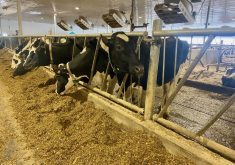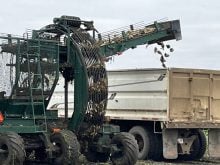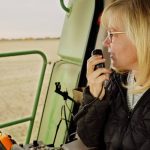GULL LAKE, Sask. – The meeting fills half the restaurant in this small Trans-Canada Highway town in southwestern Saskatchewan.
Talk moves from attracting European tourists to building a commercially viable regional airport to dealing with skilled labour shortages.
More than 20 representatives from local and provincial government, agriculture and business have gathered as part of Action Southwest to work on strengthening and promoting the resources of the large rural region anchored by Swift Current.
“If we keep doing what we’re doing, we’re going to keep getting what we’re getting,” said Doug Howorko, regional manager with Saskatchewan’s rural development department.
Read Also

Accurate accounting, inventory records are important
Maintaining detailed accounting and inventory records is not just a best practice; it’s a critical component of financial health, operational efficiency and compliance with programs like AgriStability.
Now in its second year, the coalition started by studying the local economy and exploring ways to enhance area businesses. It created partnerships across the region rather than having each of these smaller communities work on those initiatives alone, said Howorko.
Harnessing the power of partnerships is the group’s mandate, through projects aimed at reversing the declining rural population and developing business potential.
Howorko is optimistic but also realistic about the project, comparing it to growing a tree.
“There’s a whole root system growing underneath (that) you can’t see,” he said, citing the steadily increasing network of community leaders joining Action Southwest.
Attending the Sept. 23 meeting was Gull Lake mayor Jerry Peterson, eager to learn about the plan and add his thoughts to the discussion.
He had been involved in unsuccessful attempts to establish a wind turbine interpretive centre with energy companies in recent years, and hoped this coalition’s work will lead to the idea’s resurrection.
“There is strength in numbers,” Peterson said. “When you have a big group, it does make a difference.”
Les Potter, reeve of the Rural Municipality of Gull Lake, said Action Southwest and the Saskatchewan Association of Rural Municipalities’s Clearing the Path initiative are on the right track.
“We are all in this together and we’ll all go down together if we don’t work together,” he said. “What’s a benefit for you is a benefit for me.”
Anne Weisgerber, the coalition chair, said the group seeks to unite rural and urban areas.
Early meetings targeted potential participants from the region, while analyses helped identify agribusiness, energy, manufacturing and tourism as areas where the coalition could help.
“We want to work on our strengths,” she said.
Business initiatives include workshops to help area businesses find ways to share transportation, do volume buying and make their companies more efficient to compete on a world scale.
Karen Bonesky, manager of the Southwest Centre for Entrepreneurial Development, said the global marketplace is forcing local business to work together rather than compete.
“It’s through collaboration that we become stronger. We’re part of a global marketplace,” she said.
“The more dollars we bring into this area, the more jobs we create, the better lifestyle there will be for our families and the stronger will be our community,” she said.
Bonesky, an area farmer, noted how a new beef and bison packing and processing plant will build on local natural strengths, citing the 300,000 plus cattle in the region and readily available feed grains.
“It makes good sense,” said Bonesky.
The feedlot and ethanol project in Shaunavon is another example of a business expected to yield economic benefits to a rich agricultural region.
Shaunavon also drew attention to itself recently by hosting Canada A.M. and Hockey Day in Canada and more recently through the purchase of a producer car rail line.
“We believe we have something to offer,” said mayor Sharon Dickie.
In manufacturing and energy sectors, the coalition wants to promote these sectors better at the high school level, identify job shortages and enhance local training.
The group wants to create an identity for the southwest region and brand products created here.
One of the tourism initiatives includes creating a list of 100 experiences in the region alongside a map of area attractions like the T-Rex Centre, the Great Sand Hills, cowboy poetry festival, Grasslands National Park and Gravelbourg’s grand cathedral.
Action Southwest has piggybacked on a similar alliance launched by Action Swift Current in recent years, broadening it to include the entire region.
Swift Current mayor Sandy Larson explained how more than 200 city businesses identified 10 priorities in a quest to build a better plan for the city.
“We are not competing with rural Saskatchewan,” Larson said. “We’re not taking away the autonomy of individual communities but working together to benefit all of us.
“Any success in southwest Saskatchewan is Swift Current’s success as well,” she said.
Doug Steele, SARM director for the southwest, said the coalition is helping identity how local governments can create a more welcoming climate in rural municipalities and erase borders to support business ventures in the region.
Howorko said Action Southwest seeks to dissolve the rural-urban divide, share resources and do together what small communities cannot do alone.
“We were all in silos in the past,” he said, noting a cave man (citizens against virtually everything) mentality only impedes rural development.
Howorko wants to restore “the winning attitude and enterprise mentality” of the early pioneers who settled here.
“We want to determine our destiny,” said Howorko.














